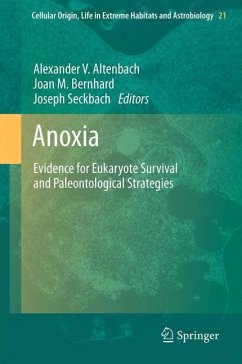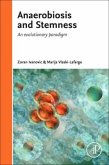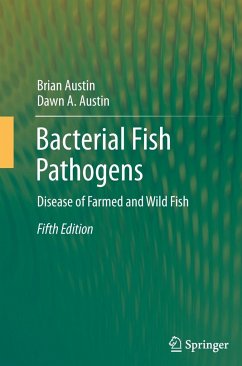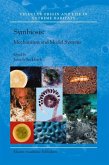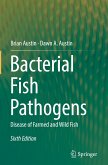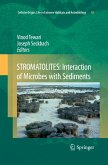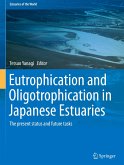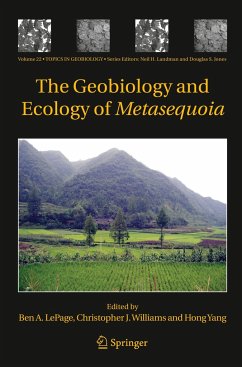Anoxia
Evidence for Eukaryote Survival and Paleontological Strategies
Herausgegeben:Altenbach, Alexander; Bernhard, Joan M.; Seckbach, Joseph
Anoxia
Evidence for Eukaryote Survival and Paleontological Strategies
Herausgegeben:Altenbach, Alexander; Bernhard, Joan M.; Seckbach, Joseph
- Broschiertes Buch
- Merkliste
- Auf die Merkliste
- Bewerten Bewerten
- Teilen
- Produkt teilen
- Produkterinnerung
- Produkterinnerung
ANOXIA defines the lack of free molecular oxygen in an environment. In the presence of organic matter, anaerobic prokaryotes produce compounds such as free radicals, hydrogen sulfide, or methane that are typically toxic to aerobes. The concomitance of suppressed respiration and presence of toxic substances suggests these habitats are inhospitable to Eukaryota. Ecologists sometimes term such environments 'Death Zones'. This book presents, however, a collection of remarkable adaptations to anoxia, observed in Eukaryotes such as protists, animals, plants and fungi. Case studies provide evidence…mehr
Andere Kunden interessierten sich auch für
![Anaerobiosis and Stemness Anaerobiosis and Stemness]() Zoran IvanovicAnaerobiosis and Stemness68,99 €
Zoran IvanovicAnaerobiosis and Stemness68,99 €![Bacterial Fish Pathogens Bacterial Fish Pathogens]() Brian AustinBacterial Fish Pathogens150,99 €
Brian AustinBacterial Fish Pathogens150,99 €![Symbiosis Symbiosis]() Symbiosis224,99 €
Symbiosis224,99 €![Bacterial Fish Pathogens Bacterial Fish Pathogens]() Brian AustinBacterial Fish Pathogens215,99 €
Brian AustinBacterial Fish Pathogens215,99 €![STROMATOLITES: Interaction of Microbes with Sediments STROMATOLITES: Interaction of Microbes with Sediments]() STROMATOLITES: Interaction of Microbes with Sediments150,99 €
STROMATOLITES: Interaction of Microbes with Sediments150,99 €![Eutrophication and Oligotrophication in Japanese Estuaries Eutrophication and Oligotrophication in Japanese Estuaries]() Eutrophication and Oligotrophication in Japanese Estuaries75,99 €
Eutrophication and Oligotrophication in Japanese Estuaries75,99 €![The Geobiology and Ecology of Metasequoia The Geobiology and Ecology of Metasequoia]() The Geobiology and Ecology of Metasequoia112,99 €
The Geobiology and Ecology of Metasequoia112,99 €-
-
-
ANOXIA defines the lack of free molecular oxygen in an environment. In the presence of organic matter, anaerobic prokaryotes produce compounds such as free radicals, hydrogen sulfide, or methane that are typically toxic to aerobes. The concomitance of suppressed respiration and presence of toxic substances suggests these habitats are inhospitable to Eukaryota. Ecologists sometimes term such environments 'Death Zones'. This book presents, however, a collection of remarkable adaptations to anoxia, observed in Eukaryotes such as protists, animals, plants and fungi. Case studies provide evidence for controlled beneficial use of anoxia by, for example, modification of free radicals, use of alternative electron donors for anaerobic metabolic pathways, and employment of anaerobic symbionts. The complex, interwoven existence of oxic and anoxic conditions in space and time is also highlighted as is the idea that eukaryotic inhabitation of anoxic habitats was established early in Earth history.
Produktdetails
- Produktdetails
- Cellular Origin, Life in Extreme Habitats and Astrobiology 21
- Verlag: Springer / Springer Netherlands
- Artikelnr. des Verlages: 978-94-007-3705-1
- 2012
- Seitenzahl: 684
- Erscheinungstermin: 30. November 2013
- Englisch
- Abmessung: 235mm x 155mm x 37mm
- Gewicht: 1036g
- ISBN-13: 9789400737051
- ISBN-10: 940073705X
- Artikelnr.: 39915365
- Herstellerkennzeichnung
- Springer-Verlag GmbH
- Tiergartenstr. 17
- 69121 Heidelberg
- ProductSafety@springernature.com
- Cellular Origin, Life in Extreme Habitats and Astrobiology 21
- Verlag: Springer / Springer Netherlands
- Artikelnr. des Verlages: 978-94-007-3705-1
- 2012
- Seitenzahl: 684
- Erscheinungstermin: 30. November 2013
- Englisch
- Abmessung: 235mm x 155mm x 37mm
- Gewicht: 1036g
- ISBN-13: 9789400737051
- ISBN-10: 940073705X
- Artikelnr.: 39915365
- Herstellerkennzeichnung
- Springer-Verlag GmbH
- Tiergartenstr. 17
- 69121 Heidelberg
- ProductSafety@springernature.com
Introduction.- Stepping into the book of Eukaryotes and Anoxia.- List of Authors and their Addresses.- List of External Reviewers and Referees.- Acknowledgment to authors, reviewers and any special people who assisted.-
PART I: GENERAL INTRODUCTION.- Anaerobic eukaryotes.- Biogeochemical reactions in marine sediments underlying anoxic water bodies.- Diversity of anaerobic prokaryotes and eukaryotes - breaking long-established dogmas.- PART II: FUNCTIONAL BIOCHEMISTRY.- The biochemical adaptations of mitochondrion-related organelles of parasitic and free-living microbial eukaryotes to low oxygen environments.- Hydrogenosomes and mitosomes: mitochondrial adaptations to life in anaerobic environments.- Adapting to hypoxia: lessons from vascular endothelial growth factor.- PART III: MANAGING ANOXIA.- Magnetotactic protists at the oxic-anoxic transition zones of coastal aquatic environments.- A novel ciliate (Ciliophora: Hypotrichida) isolated from bathyal anoxic sediments.- The wood-eating termite hindgut: diverse cellular symbioses in a microoxic to anoxic environment.- Ecological and experimental exposure of insects to anoxia reveals suprising tolerance.- The unusual response of encysted embryos of the animal extremophile, Artemia franciscana, to prolonged anoxia.- Survival of tardigrades in extreme environments - a model animal for astrobiology.- Long-term anoxia-tolerance in flowering plants.- PART IV: FORAMINIFERA.- Benthic Foraminifera: inhabitants of low-oxygen environments.- Ecological and biological response of benthic Foraminifera under oxygen-depleted conditions: evidence from laboratory approaches.- The response of benthic Foraminifera to low-oxygen conditions of the Peruvian oxygen minimum zone.- Benthic foraminiferal communities and microhabitat selection on the continental shelf off central Peru.- PART V: ZONES AND REGIONS.- Living assemblages from the "Dead Zone" and naturally occurring hypoxic zones.- Thereturn of shallow shelf seas as extreme environments: Anoxia and macrofauna reactions in the northern Adriatic Sea.- Meiobenthos of the oxic/anoxic interface in the south-western region of the Black Sea: abundance and taxonomic composition.- The role of eukaryotes in the anaerobic food web of stratified lakes.- The anoxic Framvaren fjord as a model system to study protistan diversity and evolution.- Characterizing an anoxic habitat: sulphur bacteria in a meromictic alpine lake.- Ophel, the newly discovered hypoxic chemolitho-autotrophic groundwater biome - a window to ancient animal life.- Microbial eukaryotes in the marine subsurface? - PART VI: MODERN ANALOGS AND TEMPLATES FOR EARTH HISTORY.- On the use of stable nitrogen isotopes in present and past anoxic environments.- Carbon and nitrogen isotopic fractionation in Foraminifera: possible signatures from anoxia.- The functionality of pores in benthic Foraminifera in view of bottom water oxygenation. A review.- Anoxia-dysoxia at the sediment-water interface of the southern Tethys in the late Cretaceous: Mishash formation, southern Israel.- Styles of agglutination in benthic Foraminifera from modern Santa Barbara basin sediments and the implications of finding fossil analogs in Devonian and Mississippian black shales.- Did redox conditions trigger test templates in Proterozoic Foraminifera?- The relevance of anoxic and agglutinated benthic Foraminifera to the possible Archean evolution of eukaryotes.- PART VII: FINALS.
PART I: GENERAL INTRODUCTION.- Anaerobic eukaryotes.- Biogeochemical reactions in marine sediments underlying anoxic water bodies.- Diversity of anaerobic prokaryotes and eukaryotes - breaking long-established dogmas.- PART II: FUNCTIONAL BIOCHEMISTRY.- The biochemical adaptations of mitochondrion-related organelles of parasitic and free-living microbial eukaryotes to low oxygen environments.- Hydrogenosomes and mitosomes: mitochondrial adaptations to life in anaerobic environments.- Adapting to hypoxia: lessons from vascular endothelial growth factor.- PART III: MANAGING ANOXIA.- Magnetotactic protists at the oxic-anoxic transition zones of coastal aquatic environments.- A novel ciliate (Ciliophora: Hypotrichida) isolated from bathyal anoxic sediments.- The wood-eating termite hindgut: diverse cellular symbioses in a microoxic to anoxic environment.- Ecological and experimental exposure of insects to anoxia reveals suprising tolerance.- The unusual response of encysted embryos of the animal extremophile, Artemia franciscana, to prolonged anoxia.- Survival of tardigrades in extreme environments - a model animal for astrobiology.- Long-term anoxia-tolerance in flowering plants.- PART IV: FORAMINIFERA.- Benthic Foraminifera: inhabitants of low-oxygen environments.- Ecological and biological response of benthic Foraminifera under oxygen-depleted conditions: evidence from laboratory approaches.- The response of benthic Foraminifera to low-oxygen conditions of the Peruvian oxygen minimum zone.- Benthic foraminiferal communities and microhabitat selection on the continental shelf off central Peru.- PART V: ZONES AND REGIONS.- Living assemblages from the "Dead Zone" and naturally occurring hypoxic zones.- Thereturn of shallow shelf seas as extreme environments: Anoxia and macrofauna reactions in the northern Adriatic Sea.- Meiobenthos of the oxic/anoxic interface in the south-western region of the Black Sea: abundance and taxonomic composition.- The role of eukaryotes in the anaerobic food web of stratified lakes.- The anoxic Framvaren fjord as a model system to study protistan diversity and evolution.- Characterizing an anoxic habitat: sulphur bacteria in a meromictic alpine lake.- Ophel, the newly discovered hypoxic chemolitho-autotrophic groundwater biome - a window to ancient animal life.- Microbial eukaryotes in the marine subsurface? - PART VI: MODERN ANALOGS AND TEMPLATES FOR EARTH HISTORY.- On the use of stable nitrogen isotopes in present and past anoxic environments.- Carbon and nitrogen isotopic fractionation in Foraminifera: possible signatures from anoxia.- The functionality of pores in benthic Foraminifera in view of bottom water oxygenation. A review.- Anoxia-dysoxia at the sediment-water interface of the southern Tethys in the late Cretaceous: Mishash formation, southern Israel.- Styles of agglutination in benthic Foraminifera from modern Santa Barbara basin sediments and the implications of finding fossil analogs in Devonian and Mississippian black shales.- Did redox conditions trigger test templates in Proterozoic Foraminifera?- The relevance of anoxic and agglutinated benthic Foraminifera to the possible Archean evolution of eukaryotes.- PART VII: FINALS.
Introduction.- Stepping into the book of Eukaryotes and Anoxia.- List of Authors and their Addresses.- List of External Reviewers and Referees.- Acknowledgment to authors, reviewers and any special people who assisted.-
PART I: GENERAL INTRODUCTION.- Anaerobic eukaryotes.- Biogeochemical reactions in marine sediments underlying anoxic water bodies.- Diversity of anaerobic prokaryotes and eukaryotes - breaking long-established dogmas.- PART II: FUNCTIONAL BIOCHEMISTRY.- The biochemical adaptations of mitochondrion-related organelles of parasitic and free-living microbial eukaryotes to low oxygen environments.- Hydrogenosomes and mitosomes: mitochondrial adaptations to life in anaerobic environments.- Adapting to hypoxia: lessons from vascular endothelial growth factor.- PART III: MANAGING ANOXIA.- Magnetotactic protists at the oxic-anoxic transition zones of coastal aquatic environments.- A novel ciliate (Ciliophora: Hypotrichida) isolated from bathyal anoxic sediments.- The wood-eating termite hindgut: diverse cellular symbioses in a microoxic to anoxic environment.- Ecological and experimental exposure of insects to anoxia reveals suprising tolerance.- The unusual response of encysted embryos of the animal extremophile, Artemia franciscana, to prolonged anoxia.- Survival of tardigrades in extreme environments - a model animal for astrobiology.- Long-term anoxia-tolerance in flowering plants.- PART IV: FORAMINIFERA.- Benthic Foraminifera: inhabitants of low-oxygen environments.- Ecological and biological response of benthic Foraminifera under oxygen-depleted conditions: evidence from laboratory approaches.- The response of benthic Foraminifera to low-oxygen conditions of the Peruvian oxygen minimum zone.- Benthic foraminiferal communities and microhabitat selection on the continental shelf off central Peru.- PART V: ZONES AND REGIONS.- Living assemblages from the "Dead Zone" and naturally occurring hypoxic zones.- Thereturn of shallow shelf seas as extreme environments: Anoxia and macrofauna reactions in the northern Adriatic Sea.- Meiobenthos of the oxic/anoxic interface in the south-western region of the Black Sea: abundance and taxonomic composition.- The role of eukaryotes in the anaerobic food web of stratified lakes.- The anoxic Framvaren fjord as a model system to study protistan diversity and evolution.- Characterizing an anoxic habitat: sulphur bacteria in a meromictic alpine lake.- Ophel, the newly discovered hypoxic chemolitho-autotrophic groundwater biome - a window to ancient animal life.- Microbial eukaryotes in the marine subsurface? - PART VI: MODERN ANALOGS AND TEMPLATES FOR EARTH HISTORY.- On the use of stable nitrogen isotopes in present and past anoxic environments.- Carbon and nitrogen isotopic fractionation in Foraminifera: possible signatures from anoxia.- The functionality of pores in benthic Foraminifera in view of bottom water oxygenation. A review.- Anoxia-dysoxia at the sediment-water interface of the southern Tethys in the late Cretaceous: Mishash formation, southern Israel.- Styles of agglutination in benthic Foraminifera from modern Santa Barbara basin sediments and the implications of finding fossil analogs in Devonian and Mississippian black shales.- Did redox conditions trigger test templates in Proterozoic Foraminifera?- The relevance of anoxic and agglutinated benthic Foraminifera to the possible Archean evolution of eukaryotes.- PART VII: FINALS.
PART I: GENERAL INTRODUCTION.- Anaerobic eukaryotes.- Biogeochemical reactions in marine sediments underlying anoxic water bodies.- Diversity of anaerobic prokaryotes and eukaryotes - breaking long-established dogmas.- PART II: FUNCTIONAL BIOCHEMISTRY.- The biochemical adaptations of mitochondrion-related organelles of parasitic and free-living microbial eukaryotes to low oxygen environments.- Hydrogenosomes and mitosomes: mitochondrial adaptations to life in anaerobic environments.- Adapting to hypoxia: lessons from vascular endothelial growth factor.- PART III: MANAGING ANOXIA.- Magnetotactic protists at the oxic-anoxic transition zones of coastal aquatic environments.- A novel ciliate (Ciliophora: Hypotrichida) isolated from bathyal anoxic sediments.- The wood-eating termite hindgut: diverse cellular symbioses in a microoxic to anoxic environment.- Ecological and experimental exposure of insects to anoxia reveals suprising tolerance.- The unusual response of encysted embryos of the animal extremophile, Artemia franciscana, to prolonged anoxia.- Survival of tardigrades in extreme environments - a model animal for astrobiology.- Long-term anoxia-tolerance in flowering plants.- PART IV: FORAMINIFERA.- Benthic Foraminifera: inhabitants of low-oxygen environments.- Ecological and biological response of benthic Foraminifera under oxygen-depleted conditions: evidence from laboratory approaches.- The response of benthic Foraminifera to low-oxygen conditions of the Peruvian oxygen minimum zone.- Benthic foraminiferal communities and microhabitat selection on the continental shelf off central Peru.- PART V: ZONES AND REGIONS.- Living assemblages from the "Dead Zone" and naturally occurring hypoxic zones.- Thereturn of shallow shelf seas as extreme environments: Anoxia and macrofauna reactions in the northern Adriatic Sea.- Meiobenthos of the oxic/anoxic interface in the south-western region of the Black Sea: abundance and taxonomic composition.- The role of eukaryotes in the anaerobic food web of stratified lakes.- The anoxic Framvaren fjord as a model system to study protistan diversity and evolution.- Characterizing an anoxic habitat: sulphur bacteria in a meromictic alpine lake.- Ophel, the newly discovered hypoxic chemolitho-autotrophic groundwater biome - a window to ancient animal life.- Microbial eukaryotes in the marine subsurface? - PART VI: MODERN ANALOGS AND TEMPLATES FOR EARTH HISTORY.- On the use of stable nitrogen isotopes in present and past anoxic environments.- Carbon and nitrogen isotopic fractionation in Foraminifera: possible signatures from anoxia.- The functionality of pores in benthic Foraminifera in view of bottom water oxygenation. A review.- Anoxia-dysoxia at the sediment-water interface of the southern Tethys in the late Cretaceous: Mishash formation, southern Israel.- Styles of agglutination in benthic Foraminifera from modern Santa Barbara basin sediments and the implications of finding fossil analogs in Devonian and Mississippian black shales.- Did redox conditions trigger test templates in Proterozoic Foraminifera?- The relevance of anoxic and agglutinated benthic Foraminifera to the possible Archean evolution of eukaryotes.- PART VII: FINALS.

